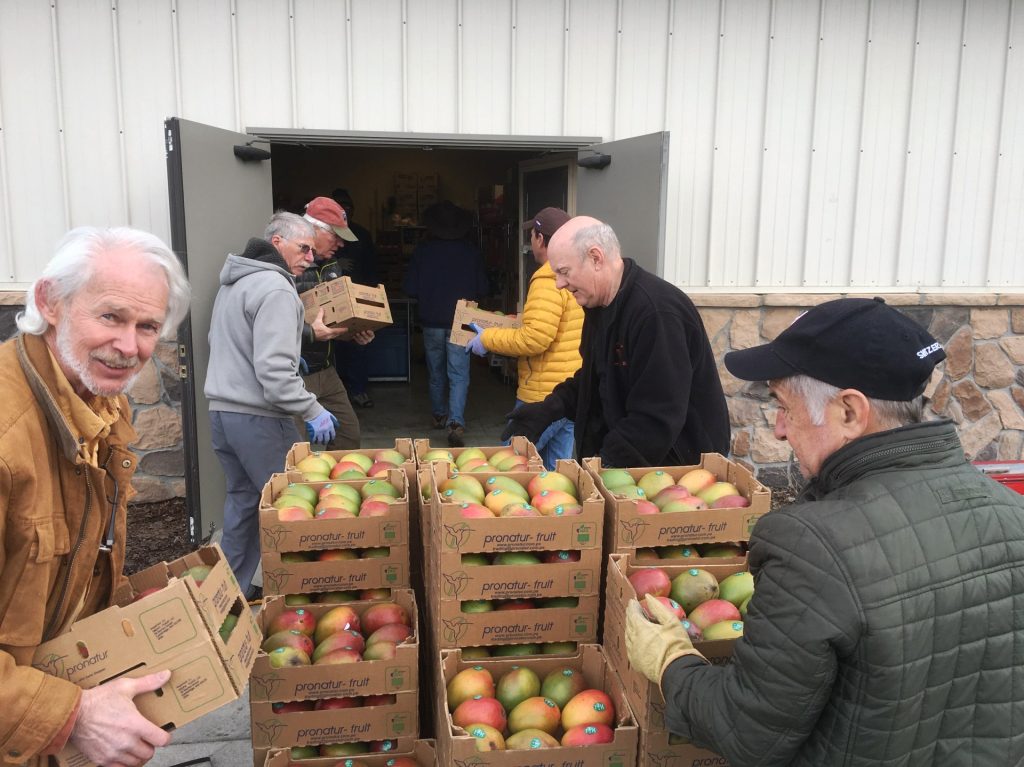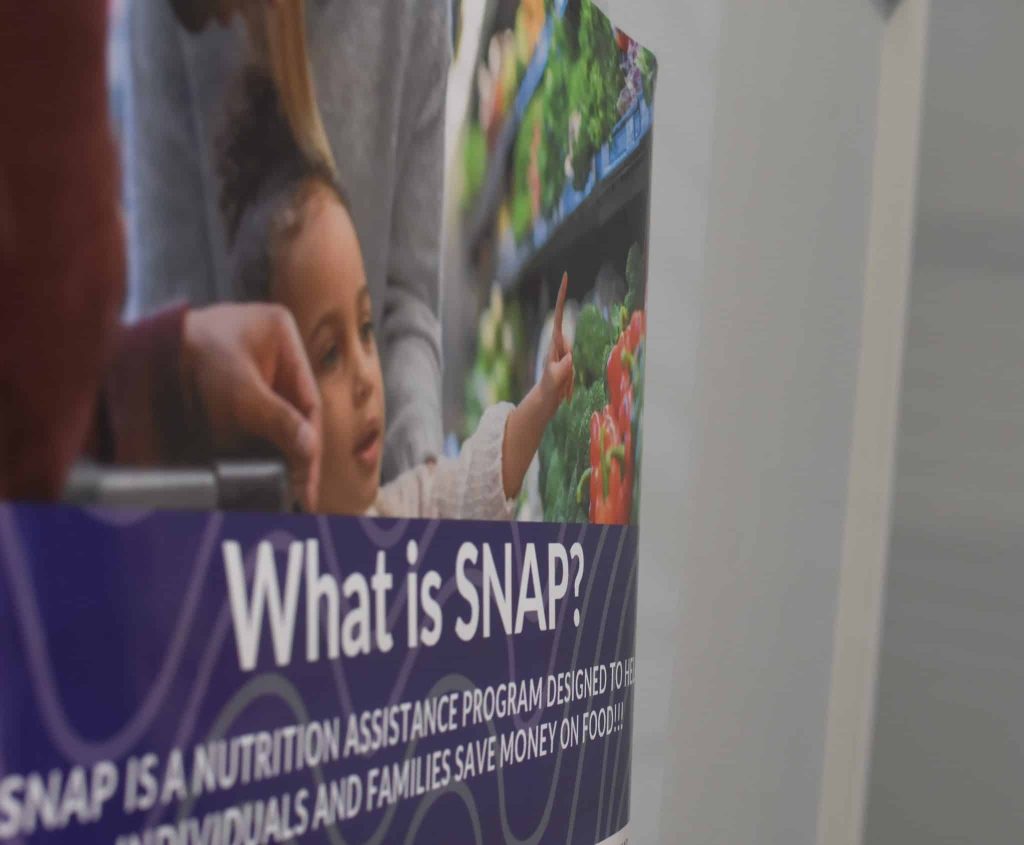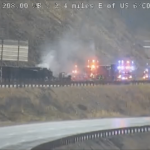Colorado food banks face compounding crises, could see funding impacts of government shutdown next month
During a virtual roundtable hosted by U.S. Sen. Michael Bennet, food bank leaders said they are dealing with a ‘significant increase’ in demand

Sue Fegelein/Courtesy photo
Colorado food bank leaders say they are continuing to weather compounding crises, from ever-increasing demand to fewer subsidies for food procurement.
And while they’ve so far been spared from the federal government shutdown that began on Oct. 1, if the standoff between Republicans and Democrats drags into next month, that could change.
During a virtual roundtable discussion with food bank leaders on Wednesday, U.S. Sen. Michael Bennet said food banks that ordered food through the Department of Agriculture’s Emergency Food Assistance Program prior to Oct. 1 will still be reimbursed for those orders.
The program is a critical tool that food providers use to stock their shelves and reimbursements, but those organizations could see disruptions starting in November if government funding is not restored.
“It is going to start to have an effect, but so far, we’re in an early enough window that it has not yet,” Bennet said.
The shutdown is just one of several challenges — some ongoing and others looming — that food providers say are complicating their abilities to fight hunger in their communities.
As of 2023, Colorado experienced a 10-year high in food insecurity, according to data from Feeding America. Anti-hunger advocates say the need hasn’t slowed down.
Last year, Feeding Colorado, which represents the state’s five Feeding America-affiliated food banks, served roughly 1 million people and distributed approximately 146 million pounds of food, according to Executive Director Mandy Nuku. That equated to $28 million worth of food.
“When you look back prior to COVID in 2019, our network spent approximately $8 million purchasing food,” Nuku said. “So, the significant increase is already being felt.”
That comes as food providers are grappling with fewer resources.
Earlier this year, President Donald Trump’s administration cut $1 billion from food assistance programs, including $500 million from the emergency food assistance program.
Sue Fegelein, executive director for LiftUp Routt County, which runs food banks in Steamboat Springs and Oak Creek, said the cuts have translated to fewer options for food pantries at a time when demand is on the rise. Around 1 in 2 clients who rely on LiftUp’s pantries say it accounts for anywhere from 50% to 75% of the food they eat.
“And we’re just meant to be supplemental,” Fegelein said, “… and so, we strive really hard in our food pantry to provide a lot of fresh produce and the proteins that are the most desired items among our clients.”
But with less buying power due to federal cuts, “It’s been fish sticks for three months, and not a lot of it.”
Food bank leaders in Colorado’s rural resort communities said meeting the need has been especially challenging in their areas, where the cost of living — from housing to child care — is among the highest in the state.
Amber Henning, director of development and community relations for Food Bank of the Rockies’ Western Slope division based in Grand Junction, said in the U.S., 85% of the counties experiencing the highest food insecurity rates are rural.
“And that has to do with those wages not keeping up with those increased food costs, and also the challenges that make food further away,” Henning said.
Because of that, food can often fall to the wayside for working residents, who will prioritize other essential needs, like housing, instead. Henning said it’s important to understand that hunger affects a range of people.
“The individuals who are experiencing issues of hunger right now are our neighbors,” Henning said. “They are educators, health care workers, restaurant servers, construction workers.”

In Summit County, food costs are about 20% to 30% higher than in Denver, according to Brianne Snow, executive director for the Family and Intercultural Resource Center.
With much of the workforce in tourism- and service-related jobs, where work is seasonal, their pay often ebbs and flows. That puts even more pressure on food providers during the off-season, Snow said.
Her nonprofit serves around one-third of Summit County’s population, or about 10,000 people, and its food bank is one of its most utilized services. Snow said she’s concerned about how the
nonprofit will keep up once cuts to the Supplemental Nutrition Assistance Program go into effect, which will tighten eligibility for benefits and reduce federal funding for states to administer the program.
Most of those changes are slated to take effect in 2027 and were passed earlier this year as part of congressional Republicans’ One Big Beautiful Bill Act.

“We are really feeling the strain, and this is before we’re looking at SNAP cuts and the federal shutdown continuing on,” Snow said. “We’re really, really concerned about how to move forward and how to continue to serve folks at the level that they need.”
Bennet asked food providers what it will mean once SNAP cuts take effect, with many saying they will have to rely even more on community fundraising and partnerships to deal with what they expect will be increased demand.
Food bank leaders said it’s important to educate communities about the need and to push for more people to help however they can, including through donations.

Support Local Journalism

Support Local Journalism
Readers around Glenwood Springs and Garfield County make the Post Independent’s work possible. Your financial contribution supports our efforts to deliver quality, locally relevant journalism.
Now more than ever, your support is critical to help us keep our community informed about the evolving coronavirus pandemic and the impact it is having locally. Every contribution, however large or small, will make a difference.
Each donation will be used exclusively for the development and creation of increased news coverage.










